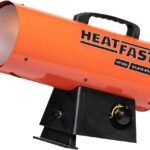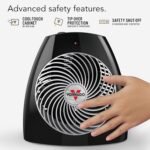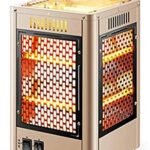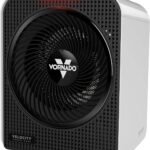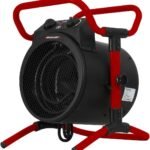You’re about to embark on an enlightening journey through the technicalities of water heater installations. Specifically, we will be shedding light on one of the most asked questions related to it – what is the minimum clearance on the back, sides, top, bottom, and front of water heaters? Precise knowledge of these measurements is crucial not only for ensuring effective operation but also for maintaining safety standards. So come along, and let’s equip ourselves with the right knowledge to avoid any water heater mishaps.
Understanding Water Heater Clearances
When it comes to installing or maintaining a water heater, it’s not just about hooking it up and turning it on. One of the important aspects you should consider is the allowance around the appliance, known as the ‘water heater clearances.’
Definition of water heater clearances
You may ask, what exactly are water heater clearances? These are the minimum distances to be maintained around the water heater from all sides – back, sides, top, bottom, and front. Maintain these clearances helps to ensure the safe and efficient operation of the water heater.
Importance of adhering to clearance regulations
Adhering to clearance regulations is important for various reasons. Firstly, proper clearance prevents accidental bumps or damages which can result in leaks or other malfunctions. Secondly, it ensures enough airflow for combustion, cooling, and heat dissipation. Lastly, it guarantees adequate space for maintenance or repair.
Minimum Clearance on the Back of Water Heaters
Understanding the clearances for each side of the water heater is crucial. There are different standards for each side, let’s start with the back.
Measurement standards for clearance on the back
The minimum clearance for the back of the water heater often depends on the type of heater and its operational needs. While specific values can vary, a general rule of thumb is to maintain at least a few inches of clearance.
Significance of clearance on the back
The back clearance plays an important role in mitigating the risk of fire hazards. It allows for proper ventilation, which prevents the buildup of heat and combustion gases, contributing to the efficient functioning of the heater.
Potential issues with insufficient back clearance
Failure to maintain sufficient back clearance can lead to several issues, such as reduced ventilation and increased risk of fire hazards. Poor ventilation can also inhibit the heater’s performace, leading to inadequate heating and increased energy consumption.
Minimum Clearance on the Sides of Water Heaters
One must also take note of the clearance on the sides of the heater.
Measurement criteria for side clearance
Side clearance measurements are just as important as those for the back. For typical residential water heaters, a common standard is about one-foot clearance on the sides.
Relevance of side clearance in heater function
Sufficient side clearance helps accommodate heat expansion and enables easy access for installation and maintenance. It also prevents accidental contact with walls or other appliances that could lead to damage or fire hazards.
Possible hindrances due to inadequate side clearance
Inadequate side clearance can impede heat expansion, potentially causing damage to the heater or surrounding fixtures. It can also make it difficult to access the heater for maintenance or repairs.
Minimum Clearance at the Top of Water Heaters
Not to be forgotten is the clearance at the top of the heater.
Standards for top clearance measurements
Top clearances are often around 12 inches or one foot. However, it’s crucial to check with a professional who can help determine the ideal clearance according to your heater model and the local building codes.
Role of top clearance in heat distribution
The top clearance not only provides a ventilation pathway for heat to escape but also serves as a safe space to protect ceiling fixtures from heat damage. Additionally, it ensures there’s enough room to accommodate the necessary plumbing and venting connectors.
Challenges arising from improper top clearance
Improper top clearance may result in overheating or fire risks due to lack of ventilation. It could potentially damage ceiling fixtures or affect the structural integrity of the housing complex.
Minimum Clearance at the Bottom of Water Heaters
Adequate clearance at the bottom of the heater is also necessary, particularly for gas water heaters placed on the floor.
Guidelines for bottom clearance measurements
The recommended bottom clearance is commonly around 12 inches for gas water heaters, whereas electric heaters don’t require a bottom clearance due to their design. However, consult with professionals to ensure the clearance follows local codes and manufacturer’s guidelines.
The impact of bottom clearance on heater stability
The bottom clearance is important for air circulation under the heater, which aids in heat management. It also plays a role in maintaining the stability of the unit, which is essential for its efficiency as well as safety.
Difficulties associated with low bottom clearance
Insufficient bottom clearance can lead to poor air circulation, potential overheating, or stability issues which could possibly lead to damage.
Minimum Clearance at the Front of Water Heaters
Last but not least is the clearance needed at the front of the heater.
Requirements for front clearance measurements
Adequate front clearance generally would be about 24 inches, providing ample space for accessing the controls, performing inspections, and conducting maintenance or repair tasks.
Purpose of front clearance for user interaction
The importance of front clearance lies in providing easy access to the heater controls and allowing easy oversight during inspections. This also aids in conducting regular maintenance and servicing tasks with minimal hassle.
Problem scenarios due to lack of enough front clearance
Absence of enough front clearance can make it difficult to access the controls, take readings or perform maintenance tasks, leading to potential degradation of the heater’s performance over time.
Factors Influencing Clearance Measurements
Several factor can impact the clearance requirements for your water heater.
Types of water heaters and their clearance requirements
Different types of water heaters will have different clearance requirements. For instance, tankless water heaters typically require less space than traditional tank ones because of their compactness. Always refer to the manufacturer’s instructions for clearance needs.
The role of installation location on clearance
The location where the heater will be installed can also dictate clearance requirements. Indoor installations generally need tighter control over clearances compared to outdoor installations.
How the capacity of the water heater affects clearance
The size and capacity of the water heater also affect clearance measurements. Larger units demand more clearance space compared to smaller models.
Adjusting Water Heater Clearances
In scenarios where clearances are inadequate, there are ways to adjust in order to meet requirements.
Methods to adjust inadequate clearance
One can adjust the clearance by adjusting the placement position, or possibly opting for a smaller model. Additionally, protective barriers or shields can sometimes be installed to diminish risks.
Professional guidelines on clearance adjustment
If adjustments are needed, it’s highly recommended to consult with a professional. They’re experienced and can provide guidance on the best ways to meet clearance requirements while upholding safety and performance.
Safety measures when adjusting heater clearances
Safety measures, such as wearing protective gear and double-checking measurements before moving the heater, should be carried out when adjusting heater clearances. Remember, safety is paramount when dealing with these types of appliances.
Possible Risks of Improper Water Heater Clearances
Overlooking proper water heater clearances can result in a host of issues.
The effects of insufficient clearances on heater functioning
Improper clearances can directly impact the heater’s performance. They can lead to inadequate ventilation, overheating of components, and disruption of regular maintenance. This could eventually degrade the heater’s efficiency and increase energy consumption.
Associated safety hazards of improper clearances
Inadequate clearances can increase the risks of fire hazards and can possibly cause structural damage to the property. Also, they might lead to potential gas leaks in case the heater is bumped or damaged.
Impact on appliance longevity due to improper clearances
Insufficient clearances can shorten the lifespan of the appliance since they can lead to more frequent malfunctions, requiring constant repairs and resulting in stress on the heater’s components.
Ensuring Compliance with Clearance Standards
Attaining clearance standards is not only essential for the safe and smooth functioning of your water heater, but also a mandatory requirement in many places.
Role of professionals in ensuring clearance compliance
Professional plumbers or installers play a pivotal role in ensuring clearance compliance. They have in-depth knowledge regarding local codes and manufacturer’s guidelines. They ensure your heater is installed with ideal clearances for optimal operation.
Common clearance standards in different regions
Clearance standards often vary with different regions depending on the local codes. For instance, some areas may require more clearance due to environmental factors such as seismic activities. Always ensure you’re familiar with your region’s regulations.
Legal implications of non-compliance
Ignoring clearance requirements can have legal implications. Non-compliance with clearance standards can lead to penalties or violation notices. In severe cases, it might even nullify the manufacturer’s warranty or insurance coverage.
In conclusion, the minimum clearances around your water heater for the back, sides, top, bottom, and front aren’t arbitrary numbers. They play an important role in ensuring your heaters operate effectively and last longer, provide safety, and can prevent potentially costly repairs or replacements. To ensure you’re meeting these requirements, always consider seeking the assistance of a professional.


